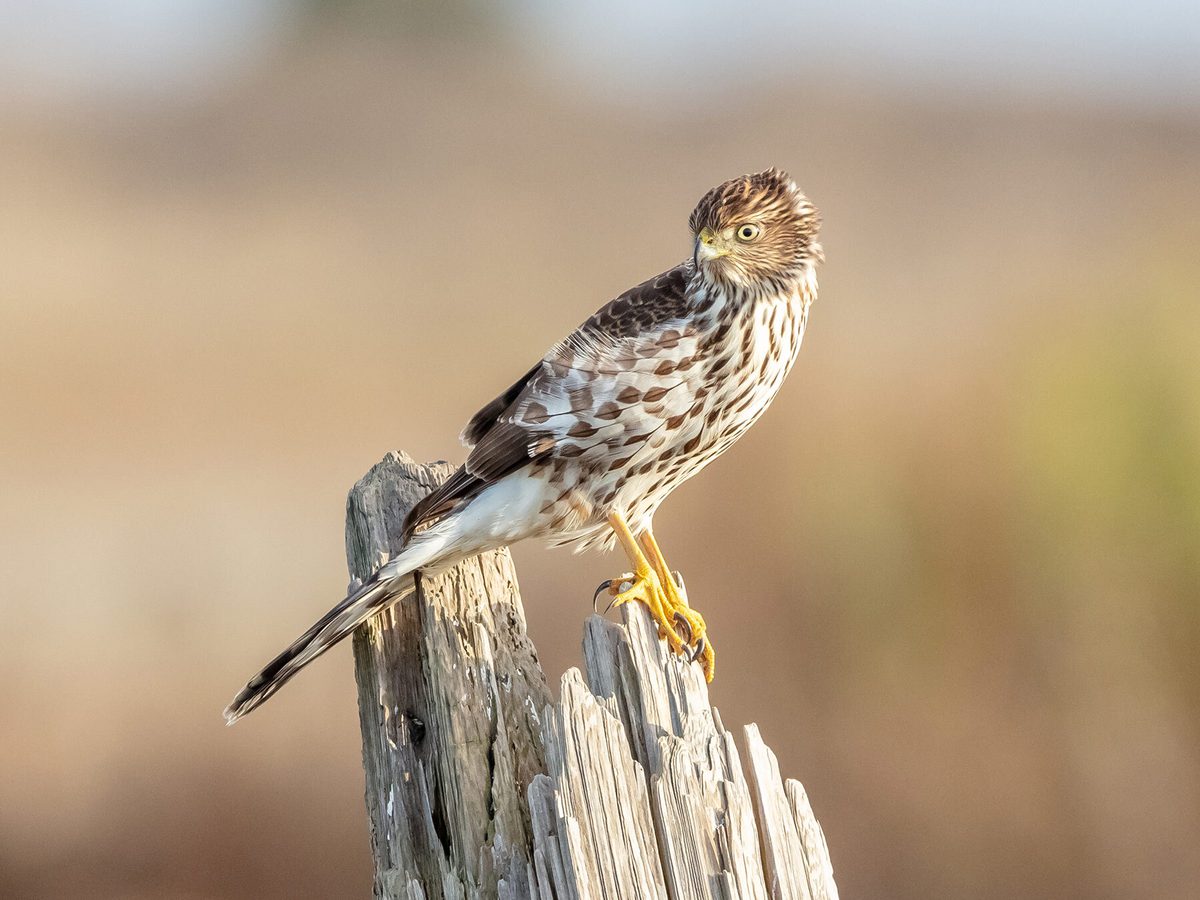It is a well-known fact that birds have hollow bones to reduce body weight and make flying that much easier. That is not where the story ends, however. The power of flight demands strong, stiff bones. If you consider the length of the bones in a bird's wings for example, and the forces they need to withstand, it's easy to see why strong bones are essential!
Birds may have hollow bones but that doesn't mean they are weaker, or even lighter than comparable mammal bones. In fact, bird bone material is relatively dense, making it heavier than mammal bone. Not all bird bones are hollow, and those that are hollow often include internal struts and ridges to increase strength and rigidity.
The internal air pockets inside hollow bones are available for another fascinating adaptation that you would probably never guess. The hollow bones of birds are said to be pneumatic, which means they hold air under pressure. Remarkably, these pneumatic bones are linked to the bird’s air sacs and form part of their highly efficient respiratory system.
Read along as we uncover more fascinating facts about bird bones and why they are hollow.

A bald eagle soaring through the sky
Are all of a bird’s bones hollow?
Birds have both hollow (pneumatized) bones, and bones that contain marrow that produces red blood cells. So, not all bird bones can be said to be hollow and, in fact, some birds don’t have hollow bones at all.
In most birds the following bones can be said to be hollow:
- Humerus
- Clavicle
- Sternum
- Pelvic girdle
- Lumbar & sacral vertebrae
Continue reading to learn more about why birds have hollow bones.
Why do birds have hollow bones?
Birds have hollow bones because they need strength and lightness for efficient flight. By combining a dense, strong, exterior layer and a hollow or airy interior, birds are able to enjoy both of these qualities. The hollow bones of birds also serve a second amazing function by increasing the respiratory capacity of the bird.
Flight is a complex means of locomotion. For birds to stay suspended in the air, they must produce enough lift to counteract the gravity acting on their own bodies. Having lighter bones goes a long way towards keeping birds in the air!
The second reason for birds having hollow bones is not quite as obvious, but just as important. Flight might be more effective than walking for traveling long distances but it also requires very efficient respiration.
The hollow or pneumatic bones of birds are linked to their respiratory system by passages known as diverticula. By having air-filled bones that connect to their lungs and air sacs, birds are able to increase their oxygen intake capacity.

Hollow bones is one of the things that helps make birds efficient with their flight
Which birds don’t have hollow bones?
Some birds do not have hollow bones. Some diving Charadriiformes like auks have solid, marrow-filled bones. Being buoyant would make diving difficult, so this adaptation is thought to assist them in hunting. Loons and penguins are some other swimming birds that lack hollow bones, and again, solid bones make diving much easier.
Are hollow bones weaker than solid bones?
The hollow bones of birds are not weaker than our solid bones. In fact, bird bone material was found to be among the densest of all animal bones. This makes the solid portions of their bones heavier, but stronger than ours.
Solid bird bones are certainly stronger, and heavier than their hollow pneumatic bones. Hollow bird bones are strengthened, however, particularly towards the ends where the outer walls are thinner but heavily fortified with struts, ridges, and webbing to provide support.

The hollow bones of birds are deceivingly strong
Do flightless birds have hollow bones?
Some flightless birds do have hollow bones, although not as many as in other flying birds. Ratites like emus and ostriches, for example, are known to have hollow femurs. Penguins are also flightless birds, although they do not have hollow bones.
You may be wondering why a flightless bird would need to have hollow bones when gravity is far less of an issue. This could partly be explained by the fact that these birds evolved from ancestors that could indeed fly.
Another important thing to note is that hollow bones are not only used to reduce weight. These specialized structures are also used in respiration, and in the case of ostriches, they are thought to aid in cooling of the body (thermoregulation).

Certain flightless birds, like emus, have some hollow bones (hollow femurs)
Do birds' bones break easily?
Bird bones do not break easily. They are remarkably strong, and it's just as well because birds often live tough lives. When you consider the mechanical stresses on the bones of a woodpecker drilling into wood, or a tern diving into the water at high speed, birds' bones seem even more remarkable.
Birds also have all of their weight supported by just two of their four limbs at any given time, which is another reason why their bones need to be strong.
Bird bones do not easily break because they are made of very dense material. They are also supported by internal structures that hold them together to increase strength and rigidity.
Nevertheless, birds certainly do break bones from time to time. Accipiters like the sharp-shinned hawk frequently suffer bone injuries as a result of their high-paced and dangerous hunting technique. According to a 2002 study, over 18% of the North American accipiters examined had healed bone fractures.

Sharp-shinned Hawks frequently break bones due to the way they hunt
Do birds have bone marrow?
Birds have bone marrow but not in all of their bones. Bone marrow is used to create red blood cells, the cells responsible for transporting oxygen taken in through the lungs, and delivering it to tissues where it is needed.
Birds do not have marrow in their pneumatic bones. Instead, red blood cells are produced primarily in the following bones:
- Radius
- Ulna
- Femur
- Scapula
- Clavicles
- Pubis
- Tibiotarsus
- Some of the vertebrae

Close up of a bird skeleton
Bird Bone FAQs
Do penguins have hollow bones?
Penguins are one of the few birds that do not have hollow bones. They are flightless birds and therefore do need to minimize their weight to stay airborne. In fact, being light and buoyant comes at a disadvantage to birds that need to dive under the water’s surface.
Do ducks have hollow bones?
Ducks have hollow bones, just like most other birds. Not all of their bones are hollow, however. Ducks also have denser, marrow-filled bones.
How dense are bird bones?
Birds have some of the densest bones of all animals. While their bones might look light and fragile, bird skeletons weigh just as much as mammal skeletons in proportion to their total body mass. Interestingly, the bone density of bats comes close to that of birds, which could reflect a similar adaptation for limiting weight and increasing strength.
